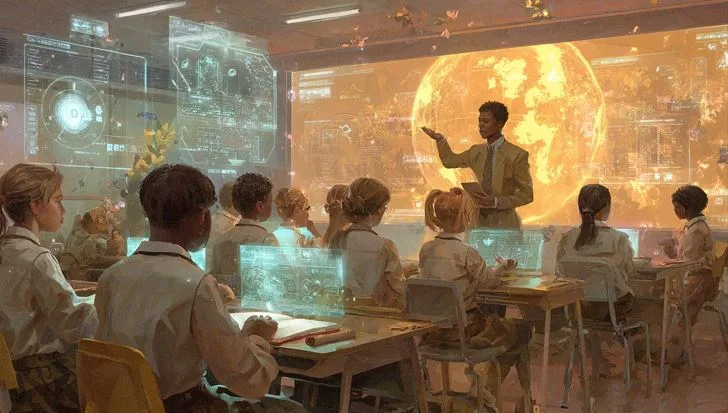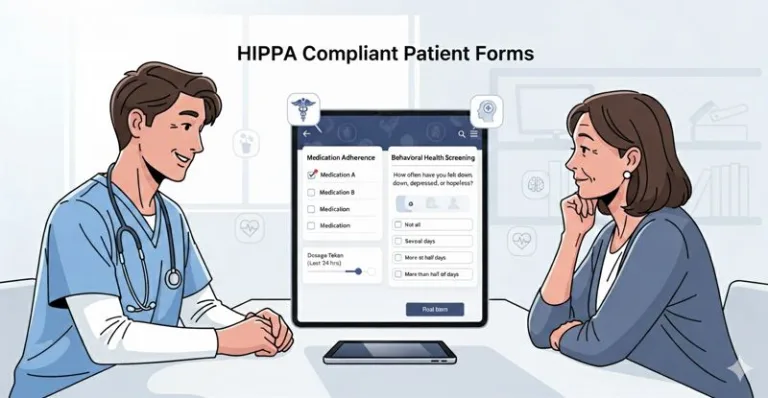Welcome to the Machine: How AI Is Rewriting the Rules of Education in 2025
Between the moment your kid asks ChatGPT to calculate his homework and your own online course invites you to do a “stretch” assignment based on your mood, you realize: schooling isn’t quite as it once was. Not by a long way.
Welcome to 2025. Class time is more engaging, AI is the new teaching aid, and learning isn’t one size fits all – it’s as tailored as your Spotify playlist. You’ve probably been introduced to the future of learning if you are a high school student, parent, or lifelong learner who is hooked on productivity hacks.
The question isn’t whether AI belongs in education. It’s how deeply its fingerprints extend.
Forget the Syllabus – Meet Your Digital Twin
In 2025, adaptive learning is no longer just a buzzword. We’re talking full-spectrum personalization. Students now have AI companions – algorithms that track progress, identify weak spots, and tweak material delivery in real time. Think Netflix’s recommendation engine, but for chemistry.
These systems don’t just record your answers. They analyze hesitation, facial expressions, even eye movement (with consent, of course – or so the terms claim). Did you struggle with quadratic equations last Tuesday? The AI noticed. Today’s lesson? A lighter review loop with spaced repetition baked in.
We’ve got tools like Squirrel AI in China or Century Tech in the UK leading the pack. In the U.S., Khanmigo – the AI-powered tutor by Khan Academy – is acting like a Socratic coach rather than a glorified calculator. It doesn’t just spit answers. It asks back. That’s huge.
Your digital twin now knows more about how you learn than your homeroom teacher ever could. Creepy? Maybe. Effective? Very.
Grading: No More Red Ink, Just Real-Time Feedback
Let’s talk about the end of grading as we knew it. In 2025, AI handles a huge chunk of assessment – not just multiple-choice but open-ended responses, code snippets, essays, and even oral presentations. Generative AI evaluates structure, clarity, factual accuracy, and tone within seconds.
And get this: it’s not punitive anymore. Instead of handing back a paper with three red circles and a final grade, systems now give rolling feedback. “Hey, your argument on paragraph three lacked evidence. Want a resource to fix that?” That’s not grading. That’s coaching.
Teachers love it because it saves time and mental bandwidth. Students? Mixed feelings. The bots never sleep. You can’t hide behind vagueness. But for the motivated learner, it’s rocket fuel.
Some universities now let AI handle first-draft review for academic papers, filtering for plagiarism, factual consistency, and even tone alignment with the course style guide. One professor called it “a co-editor with infinite patience”.
Teachers Aren’t Replaced. They’re Upgraded
Despite all the hype, AI hasn’t replaced teachers. It’s redefined what they do.
Think less “sage on the stage”, more “coach in the loop”. Educators now spend more time mentoring, facilitating peer dialogue, and handling complex emotional needs – not cramming through standardized content.
The data they get from AI dashboards is next level. Real-time engagement stats, topic mastery heat maps, attention curves. It’s like a Fitbit for classrooms.
And teacher training? Completely transformed. AI simulations let new teachers practice classroom scenarios like a flight simulator. Handle a disruptive student? Navigate a sensitive topic? There’s an AI-driven roleplay for that. This shift toward AI-assisted learning mirrors developments in other fields where strategic thinking and pattern recognition are crucial. For educators looking to understand how AI processes complex decision-making scenarios, exploring resources like the AI Knowledge Hub can provide valuable insights into algorithmic learning patterns and strategic analysis frameworks that are increasingly relevant in educational contexts.
Equity: Leveling the Playing Field – Or Tilting It Further?
Now, here’s where things get trickier.
On one hand, AI has made high-quality instruction scalable. A student in a remote Indian village or rural Montana can now access world-class tutors in their own language. Speech recognition tools can transcribe lectures, generate summaries, or even translate content into sign language.
But equity is fragile. If your school can’t afford the infrastructure – or your home lacks internet – AI remains a luxury. Algorithms trained on biased data risk reinforcing stereotypes. An “intelligent” system might push fewer challenges to girls in math, simply because past data says they perform worse. You see the problem.
Ethical frameworks are emerging. But so are gaps. Regulators sprint behind innovation, trying to catch issues in motion.
The upside? There’s growing awareness. From UNESCO guidelines to OpenAI’s content moderation tools, the conversation around bias, fairness, and accessibility isn’t fringe anymore. It’s center stage.
Exams? Nah. Welcome to Ongoing Competency Measurement
Standardized testing is undergoing a much-needed identity crisis. In its place, AI systems now continuously assess micro-skills: comprehension, reasoning, adaptability.
Instead of prepping for one high-stakes final, students build up portfolios of performance metrics. Master a topic? You level up like in a game. Struggling? The system slows down, switches mediums, throws in analogies.
Project-based learning gets a huge boost here. AI tools track how students collaborate, research, iterate, and present. In group tasks, they can even identify who’s contributing and who’s riding coattails. It’s not just about what you learned – it’s how you worked through it.
Asynchronous assessments also rise. Want to prove you understand thermodynamics at 2 AM? Go for it. The AI will be there. Wide awake. Judgy, but fair.
Mental Health, Motivation, and the Human Touch
With all this automation, it’s easy to forget that learning is still deeply emotional. And that’s where AI is surprisingly… human?
AI-powered sentiment analysis now tracks student well-being – flagging signs of burnout, frustration, or disengagement. Teachers get nudges. Students get nudges. Sometimes, counselors step in.
Some tools even offer personalized encouragement or mindfulness breaks. “You’ve been stuck on this concept for 20 minutes. Want to take a breather?” It’s like Clippy got a therapy license.
Of course, this raises privacy alarms. But early studies show that when used transparently and ethically, these nudges can help students feel supported, not surveilled.
And in a world still recovering from collective attention deficits post-pandemic, anything that nudges toward balance is welcome.
The Uncanny Valley Between Learning and Automation
There’s a paradox brewing. The more AI refines the learning journey, the more standardized it risks becoming. If everyone’s on a perfectly optimized track, where’s the room for serendipity? For creative failure? For weird tangents that spark unexpected passions?
The best systems leave space for randomness. For rabbit holes. For human messiness. In 2025, some platforms now offer “curiosity detours” – moments when students can wander outside the algorithm.
That might be AI’s greatest trick: knowing when not to intervene. Knowing when to hand the wheel back to the learner.
Final Thoughts: The New Literacy Is Learning to Learn
AI in education isn’t a tool. It’s a transformation. One that doesn’t just change what we learn – but how, when, and why.
In 2025, the most important skill isn’t memorization or test-taking. It’s meta-learning – the ability to understand your own cognition, to guide your own development, to partner with machines as co-thinkers.
So yeah, the machines are in the classroom. But if we do this right, they won’t make us less human. They’ll make our learning more so.
Class dismissed – until your dashboard reminds you it’s time to review.






